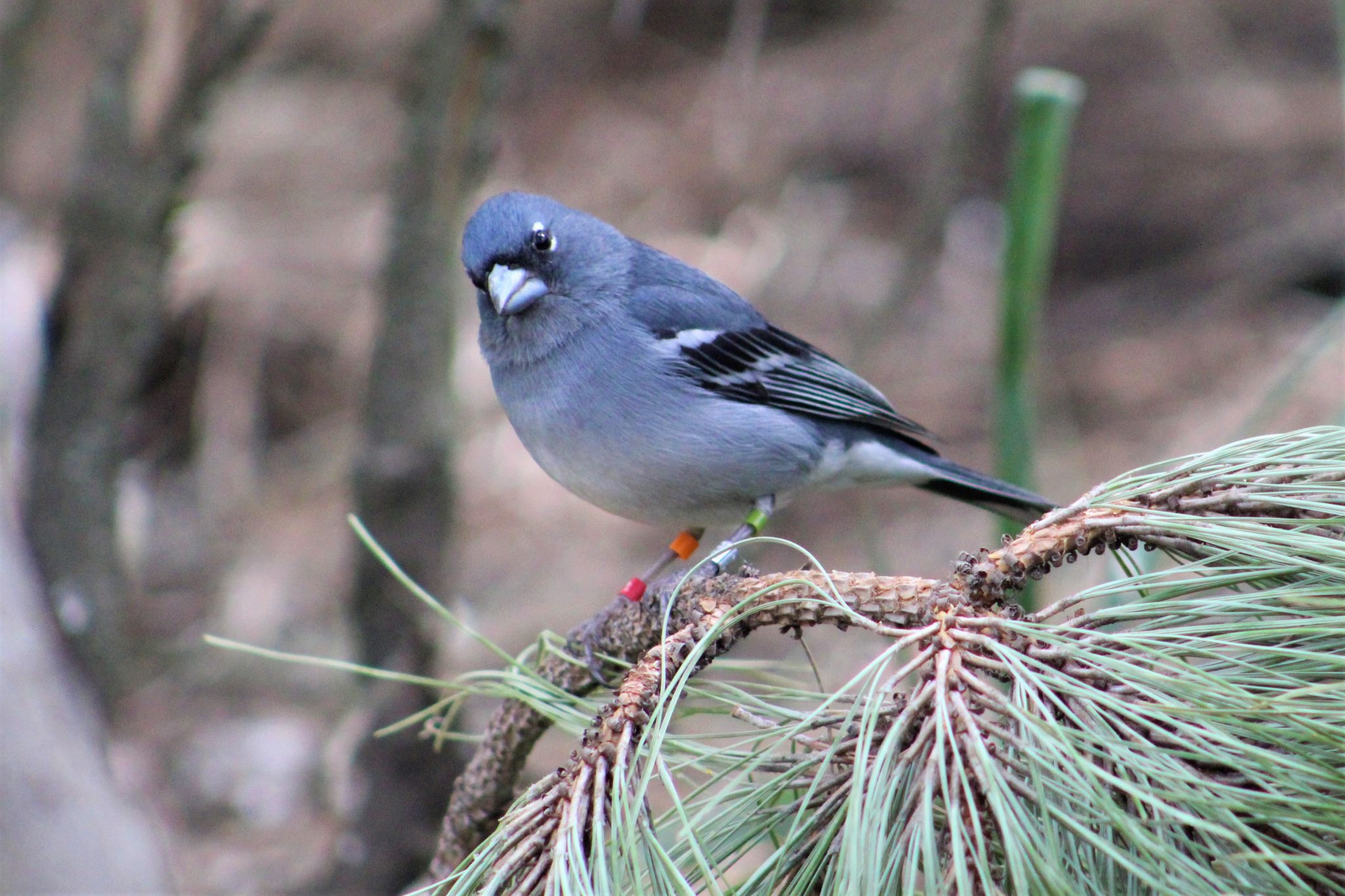He Gran Canaria blue finchFringilla polatzeki, is a bird endemic to the islands Canary Islands which, with a density varying between 9 and 16 birds/km2, has the sad record of having the lowest recorded density for small forest birds in the Palearctic.
This, coupled with the fact that until just 10 years ago, only a population of about 300 adults lived in the 40 km² Inagua Comprehensive Natural Reserve, in the middle of nature, in Gran Canariamake it a strong candidate to be part of the list of extinct species on this planet.
However, thanks to the conservation measures taken, the situation of the species has improved significantly. This is evident from a work published in the Animal Protection magazine in which they verified the success of the actions on the island.
Specifically, they evaluated the viability of the population that was translocated (transfer of single individuals to an area other than the one where they live to try to establish a new viable population) to the La Cumbre forest. The specimens of the new population came from both captive-bred specimens and young individuals from the Inagua population.
Although the population in Inagua’s natural habitat has remained relatively stable over the years, it was reduced by half due to the devastating 2007 forest fire. Therefore, this translocation program began in 2010 with the ambitious goal of establishing an additional breeding population.
The extensive study of the research team, led by the researcher of the National Museum of Natural Sciences (MNCN-CSIC), Luis M. Carrascal, has confirmed the constant growth of the population of La Cumbre, which not only consisted of two breeding pairs in 2010 to 29 in 2019. In the research, which is part of the LIFE+Pinzon projectthe University of Oviedo and the Cabildo of Gran Canaria also participated.
The population of bluefinches in Gran Canaria is growing
“In addition to counting specimens, we evaluated the viability of the translocated population at La Cumbre using a range of indicators including genetic parameters, reproductive success, ambient temperature data and biometric variables reporting the body condition of wild-born birds . ”, clarifies Carrascal.
The study results show that reproductive success in La Cumbre is comparable to that of the Inagua population. “In addition, biometric measurements of the wild-born juveniles, which include the length of the feathers and their symmetry and indicate that they are not suffering from physiological stress, showed no significant differences between the two populations for five consecutive years. This underlines the comparable growth and physical condition of the youth in both Inagua and La Cumbre,” the MNCN researcher continues.
From a genetic point of view, the results revealed that, contrary to what was expected and despite the small number of specimens, the parameters of endogamy, diversity and relatedness in the new population are similar to those of the Inagua core. According to University of Oviedo researcher Juan Carlos Illera: “This genetic analysis is an encouraging sign for the long-term sustainability of the group translocated to La Cumbre, especially given the proximity to Inagua and the gene flow between both populations. ”
“We chose the La Cumbre site because, being at a higher altitude, it is a cooler area compared to Inagua,” said Alejandro Delgado, one of the engineers who worked on the study. “It is likely that environmental conditions, with lower average temperatures and less exposure to heat above 30°C, will mitigate the adverse effects of global warming on these birds, improving their short-term viability,” notes Domingo Trujillo also on. the LIFE+finch project.
Move to preserve Gran Canaria’s blue finch
In the difficult context of the transformation of the natural environment and global warming, conservation programs can be a crucial strategy for endangered species.
These initiatives, which involve the transfer of individuals from the populations of origin or captive breeding, aim to strengthen the genetic diversity and resilience of populations, making them more resilient to environmental fluctuations, natural disasters such as major fires or diseases. .
“The conditions for their implementation must be carefully studied to avoid undesirable effects, but these measures could lead to the establishment of new viable populations of species with limited habitats,” says Carrascal.
In the specific case of Gran Canaria blue fincha proactive nature conservation approach has been implemented, funded by the Canary Islands institutions and supported by the European Union through the LIFE+Pinzón project.
“The success of the program is a testament to the careful planning and implementation of the conservation strategies implemented,” summarizes Carrrascal.
“The fate of Gran Canaria blue finchthat is now at stake could be a testimony to the effectiveness of such conservation methods and a joy for all those people who love nature,” the researcher concludes.

